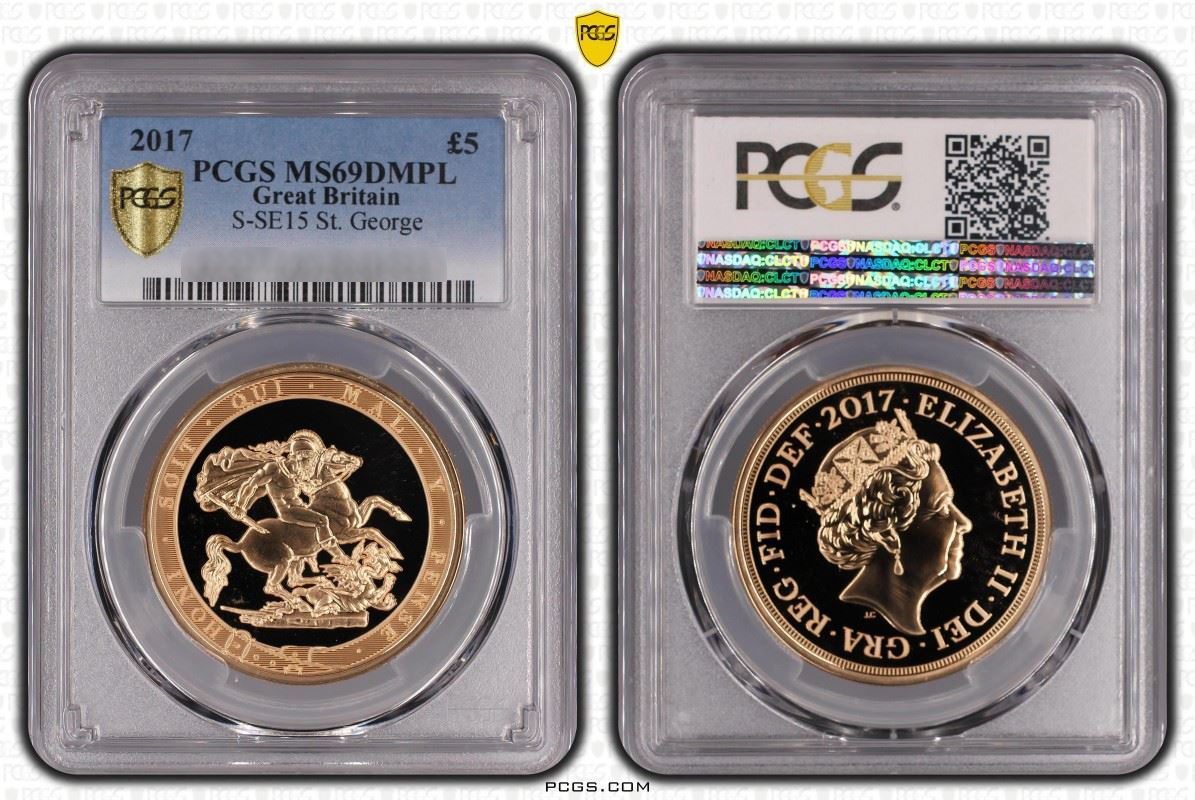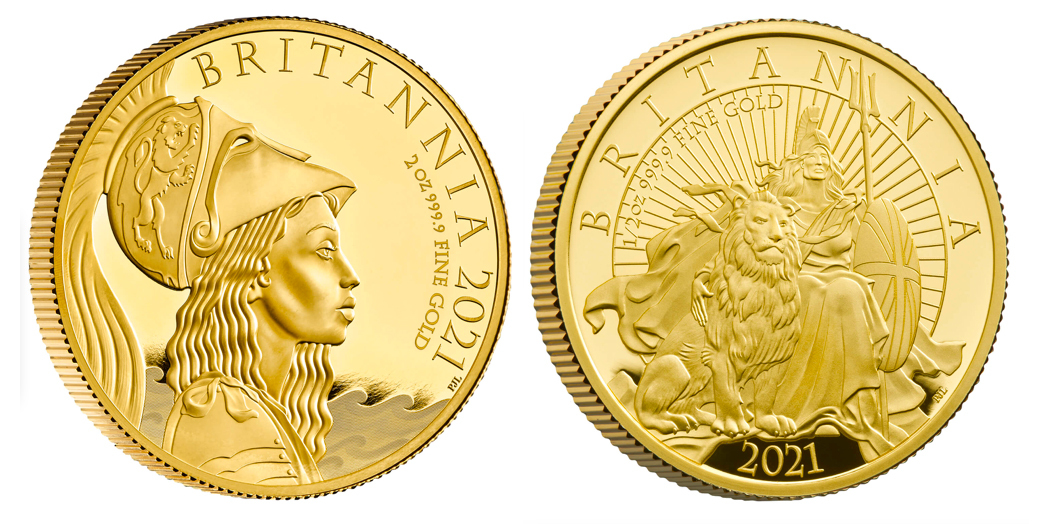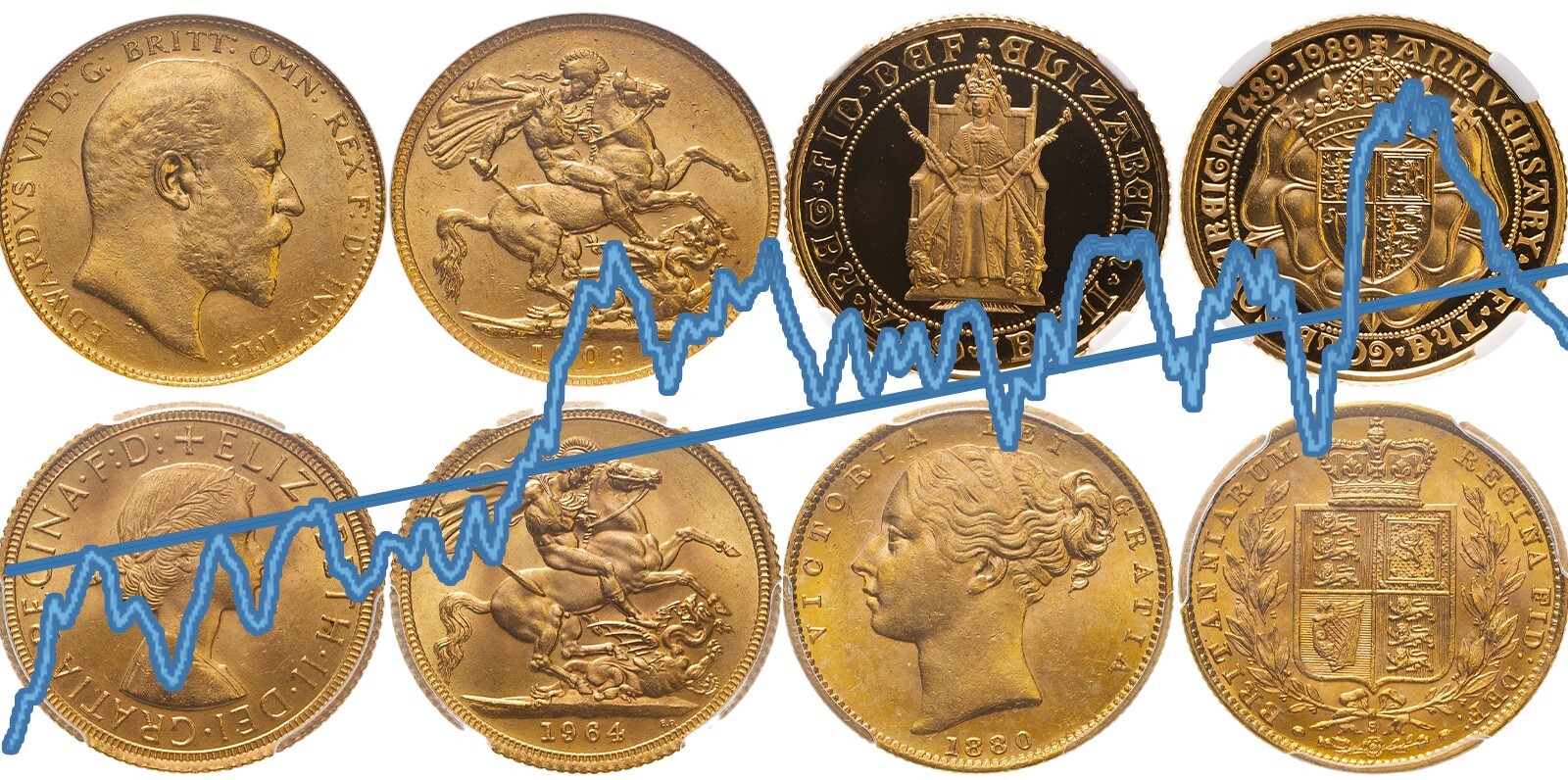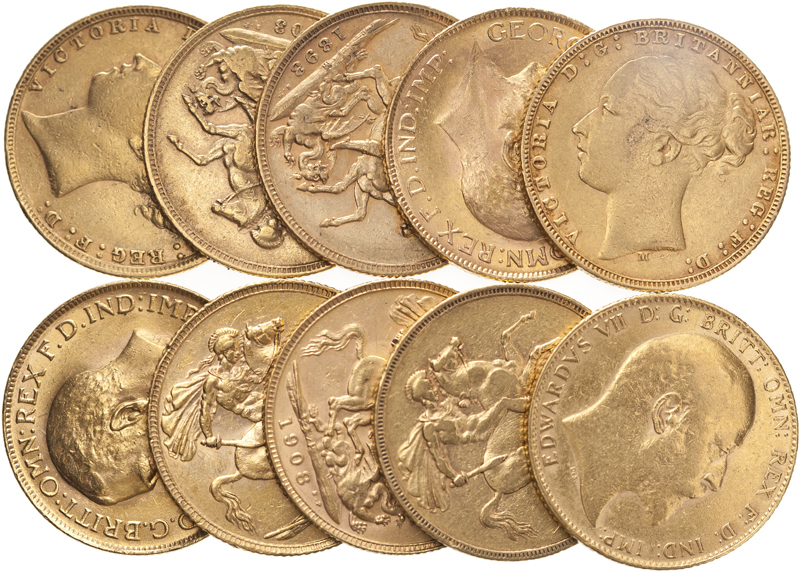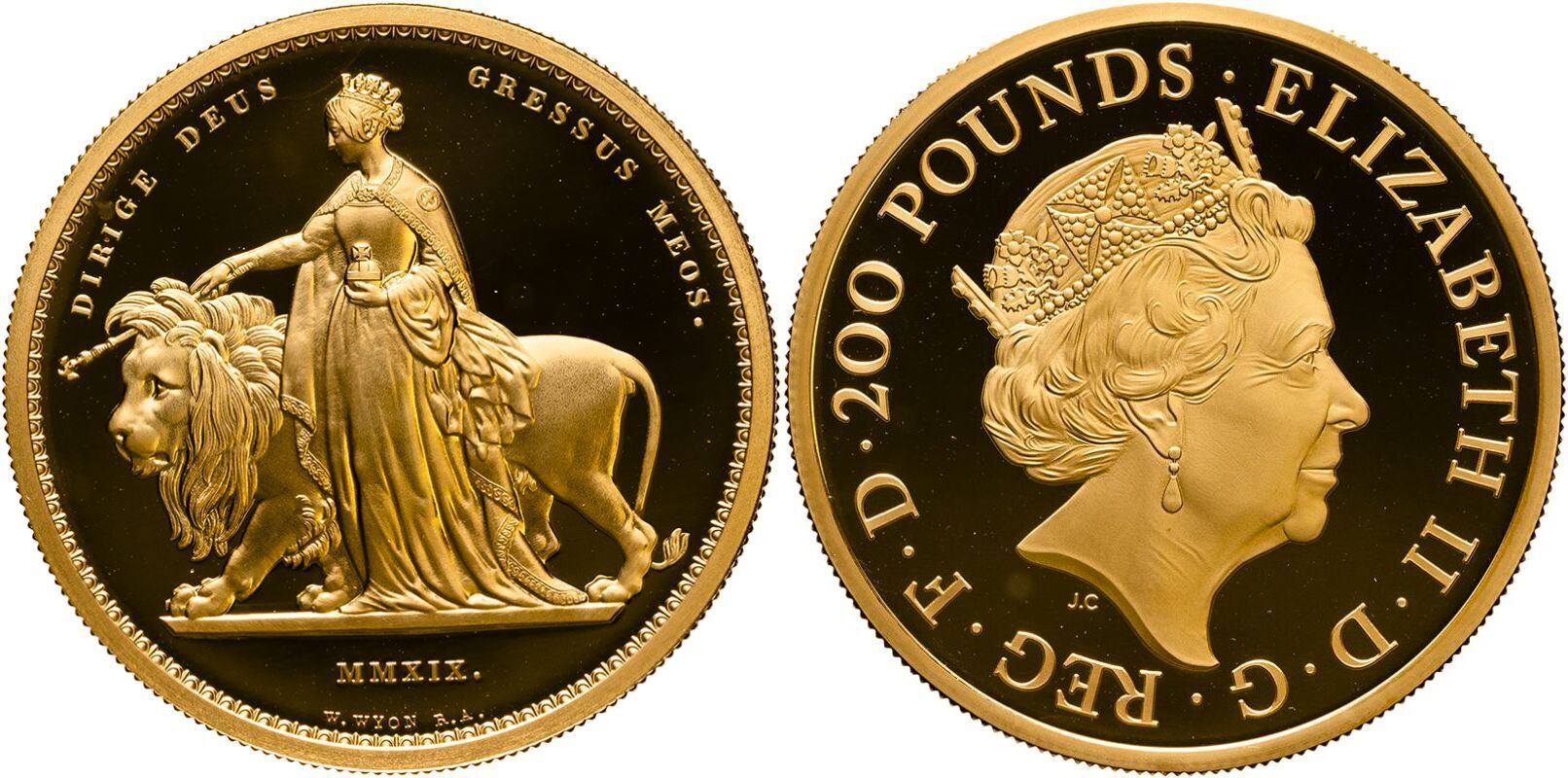Semi-numismatic or semi-collectable coins are those with a ‘premium’ on top of their bullion value. They are essentially hybrid investments — both a gold play and entry into the collectible market. The most common examples of semi-numismatic coins are Victorian sovereigns and QEII proofs whose value is made up of gold and a collectable premium.
The collectable premium should be thought of as an investment in its own right: you are buying a coin that’s worth perhaps 5 or 10% over the bullion value, which broadly tracks the gold price. You pay more for a semi-numismatic coin, but selling one offers potential upside alongside the fluctuating price of gold.
The premium in this context is different than the premium paid on a bullion coin. The premium of a semi-numismatic gold coin is an investment in the collectible market, whereas a bullion premium is the transaction cost. For example, on 11 August 2019 I sold an 1843 sovereign (a so-called shield-back) for £375.00 when the bullion value was £292.13 — a 28% premium.
The effects of a fluctuating gold price
What happens with the value of this coin if the gold price increases, for example, by 10%? There isn’t a simple answer but we need to establish bullion and collector value separately to arrive at a best estimate.
Bullion Value (BV) = £292.13; Collector Value (CV) = £82.87; Total Value (TV) = £375.00 (a price realised at auction is the best indicator of market value).
Gold price increase +10% (assuming collector value is unchanged):
- BV = £292.13 x 1.1 = £321.34
- CV = £82.87
- TV = £404.21
These calculations are based on the assumption that collector value is unchanged, which is unlikely. The collector market has different drivers, but like the bullion market, it is ultimately driven by supply and demand. Here are some considerations:
Price attachment
In a perfect market where all participants are hedged and/or acting without emotional bias to historic prices, premiums would stay relatively stable. However, many buyers of semi-numismatic gold are attached to previous price levels, so changes in market price as a response to changes in the gold price typically have a lag.
Using our example above, short-term it will have the effect of shrinking the collector premium, as buyers are reluctant to pay the higher prices. (Inversely, if the gold price was decreasing, prices stay higher for longer and premiums increase).
Priced to sell
As investors want to take profits and buyers sit on their hands, premiums are reduced as unhedged dealers need to turn over their stock. Over the 2019 summer it has been possible to buy bullion sovereigns at premiums as low as 1-2%. However, if prices stabilise at the new level, premiums will go back to normal as dealers run out of ‘cheap’ stock.
We have seen shrinking premiums in both bullion and semi-numismatic gold throughout the summer of 2019. The effect will be felt more in semi-numismatic gold simply because there is more premium to start with (compare a reduction from 3% to 1.5% premium in bullion with a reduction from 50% to 25% in semi-numismatic gold and see how it plays out in different scenarios). Aside from lower demand during the holiday period, we have in my opinion experienced the short-term effect of increasing gold prices described above.
Long term, however, it is more important that new buyers are entering the market due to increased media coverage and ‘buzz’ about gold. All-time GBP highs for gold; lowest GBP/USD rate since 1985 (aside from 2016 Brexit blip); inversion of the yield curve and flight to real assets and alternative investments: such news has much more impact on the bullion and semi-numismatic gold markets in the longer-term.
These ‘new’ buyers are eager enter the market, and less likely to be attached to the lower levels seen previously. As they begin to outnumber those with a price attachment, premiums may well increase to levels higher than they were before increases started taking place.
As an investor, semi-numismatic coins are very low-margin products. Our vision at The Coin Cabinet is to reduce transaction costs, so traders can buy and sell in the most transparent, cost-effective way possible. That’s why we offer a 0% buyer’s premium (the hammer price is what you pay, plus postage), and a standard 10% seller’s premium.
